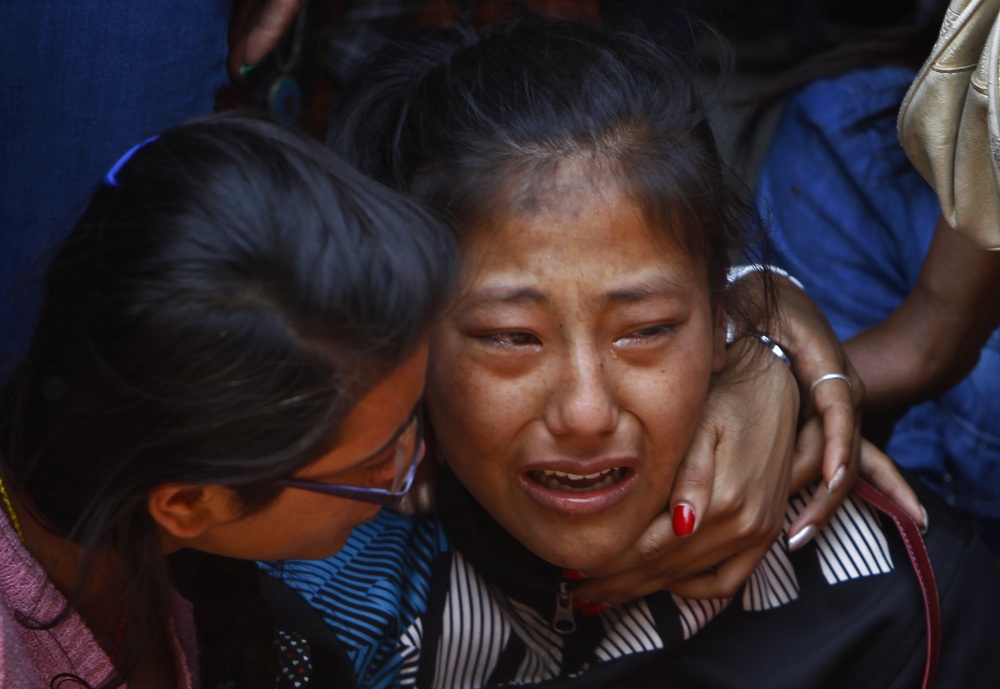KATMANDU, Nepal — Nepalese authorities were meeting with Sherpa mountain guides Tuesday in an attempt to avert a climbing strike after the deadliest avalanche ever recorded on Mount Everest killed at least 13 of the guides.
A boycott by Nepal’s ethnic Sherpa community could critically disrupt the Everest climbing season, which is key to the livelihood of thousands of Nepali guides and porters. Without Sherpa support, it would be almost impossible for climbers to reach the summit.
Sherpas have threatened to boycott the climbing season unless the government meets a series of demands by next week, including more insurance money, more financial aid for the families of the victims and new regulations that would ensure climbers’ rights.
Maddhu Sudan Burlakoti, head of Nepal’s mountaineering department, said all the demands would be discussed and a recommendation would be made to the government later Tuesday.
Since Friday’s avalanche, expedition teams have declared a week of mourning with no trips to the summit. Ang Tshering of the Nepal Mountaineering Association said about 400 foreign climbers from 39 expedition teams are on the mountain with an equal number of Sherpa guides, along with many more support staff such as cooks, cleaners and porters in the base camp.
If the Sherpas boycott the season, many of the climbers would have to forfeit most or all of the money they have spent to go up Everest, which in some cases adds up to $90,000.
Everest climbers have long relied on Sherpas for everything from hauling gear to cooking food to high-altitude guiding. Some Sherpas already left the mountain by Monday, either joining the boycott or mourning their friends and colleagues.
The avalanche caused the worst climbing accident in Everest history. At least 13 Sherpas were killed when a block of ice tore loose from the mountain and triggered a cascade that ripped through teams of guides hauling gear.
Three Sherpas missing in Friday’s avalanche are presumed dead. Authorities say it’s unlikely that their bodies — believed to be covered in snow and ice — will be recovered.
The Sherpas want the minimum insurance payment for those killed on Everest to be doubled to 2 million rupees ($20,800), and a portion of the climbing fee charged by the government to be reserved for a relief fund. The government has agreed so far to just one demand — that it build a monument in the capital in memory of those killed in the avalanche.
Pasang Sherpa of the National Mountain Guides Association said his group has signatures from more than 350 Sherpas based at the base camp. “They all support the demands, and work will not continue unless the government agrees to our demands. When the avalanche hit and rescue help was needed, there was little support from the government available at the base camp.”
Hundreds of people, both foreigners and Sherpas, have died trying to reach the summit, and about a quarter of the deaths occurred in avalanches, climbing officials say. The previous worst disaster on Everest had been a fierce blizzard on May 11, 1996, that killed eight climbers and was memorialized in a book, “Into Thin Air,” by Jon Krakauer.
More than 4,000 climbers have reached the top of Everest since 1953, when the mountain was first conquered by New Zealander Edmund Hillary and Sherpa Tenzing Norgay.
Send questions/comments to the editors.




Success. Please wait for the page to reload. If the page does not reload within 5 seconds, please refresh the page.
Enter your email and password to access comments.
Hi, to comment on stories you must . This profile is in addition to your subscription and website login.
Already have a commenting profile? .
Invalid username/password.
Please check your email to confirm and complete your registration.
Only subscribers are eligible to post comments. Please subscribe or login first for digital access. Here’s why.
Use the form below to reset your password. When you've submitted your account email, we will send an email with a reset code.